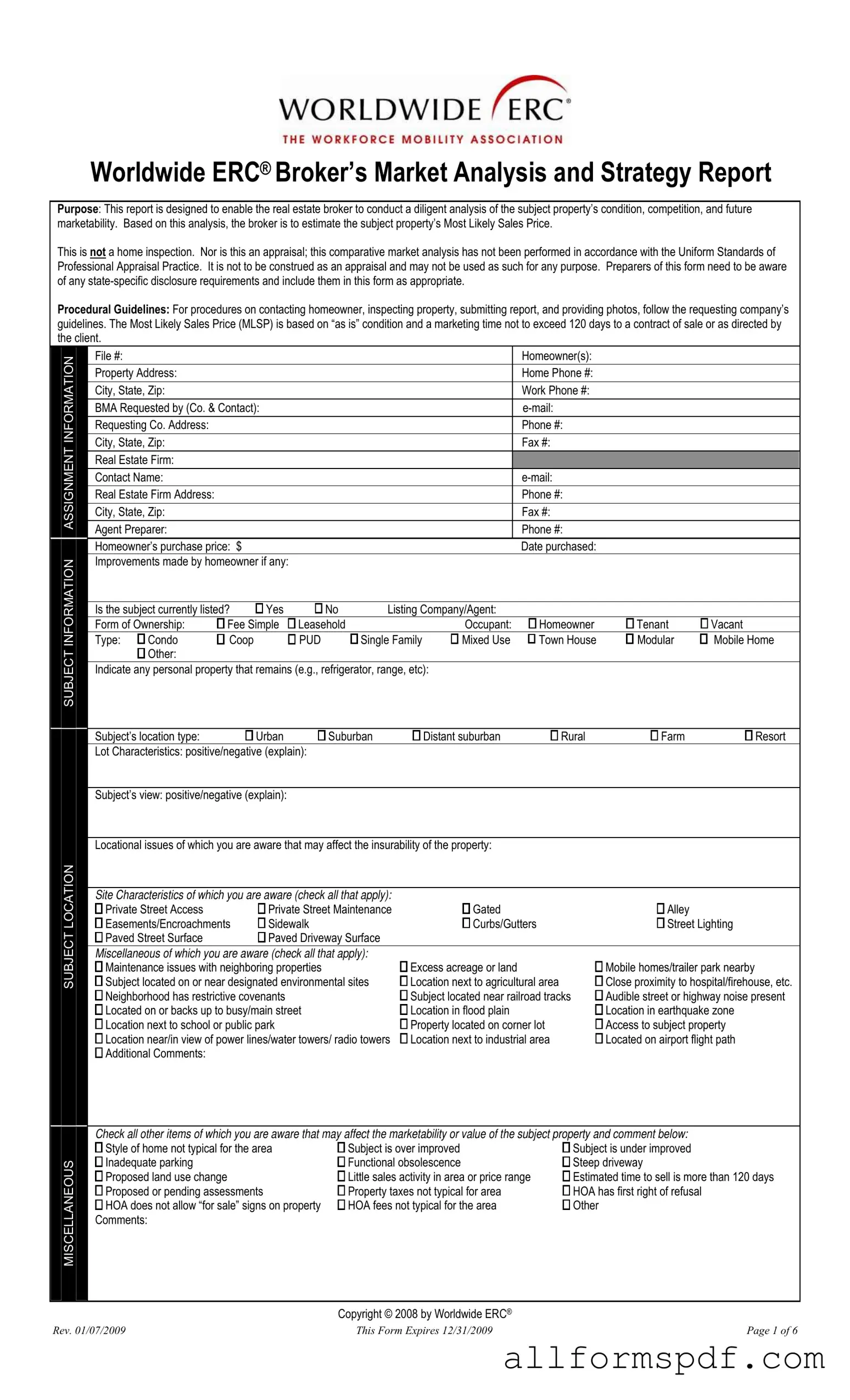Fill Out Your Erc Broker Market Analysis Form
The Erc Broker Market Analysis form is a valuable tool for real estate brokers. It helps them assess a property's condition, competition, and potential marketability. By conducting a thorough analysis, brokers can estimate the property's Most Likely Sales Price, guiding homeowners through the selling process.
Create My Erc Broker Market Analysis Now
